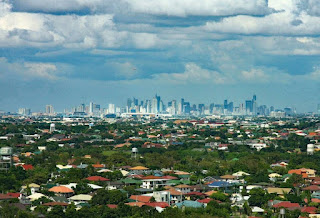Metro Manila’s forecast of becoming a global power city is challenged by the consequences of rapid urbanization. The UN-Habitat lists the effects of climate change, natural disasters that hamper urban infrastructures and city competitiveness, unequal livability, job creation, and poverty reduction.
Is there a way out of Metro Manila’s challenges? Architect and urban designer Chintan Raveshia, and urban planner and sustainability consultant Tony Chan of Singapore-based Arup emphasize urban development should also consider people’s aspirations, its changing needs and expectations, and the national identity of the residents.
Finding the identity of the city
Raveshia inspires responsible stakeholders to ask themselves first the most fundamental question: “What’s the identity of the city and how do we make its residents proud?”
He quips, “Singapore, a city that is high on everyone’s liveability list, is also working with citizens and grass roots organizations to inculcate a sense of ‘lovability’ for the city. This helps to strengthen the societal bond, increase equity, improve community safety, and exude pride and a feeling of ownership of the city amongst the residents. The balance of liveability, efficiency, and lovability paves the way for a true success of our cities in this climate emergency era”.
For his part, Chan believes that a successful sustainable urban development goes hand in hand with the capability to enhance people’s quality of life.[RKRC1] “We must develop and harness models of development that have low-carbon targets, which are also of a human scale, thriving and inclusive; models that are also just, secured and enhances the quality of life for all its residents. In addition, we should look at creative ways to increase local citizen participation as well as new technologies or products that can support the overarching vision and development objectives”, says Chan.
economic driver – accounting for 32% of the country’s gross domestic product (GDP) – it’s often challenged in sustaining accessible living conditions for residents across all social classes. UK-based The Economist Intelligence Unit (EIU) ranked Metro Manila 105th out of 139 cities in the Global Liveability Index 2022. The increasing population density in Metro Manila has resulted in some inconveniences in daily conditions like vehicular traffic situations, least green open spaces, high carbon footprint, inaccessibility to affordable housing, and unequal income opportunities.
The impact was even more drastic in Metro Manila due to population density, crowded space, and insufficient parks and open areas.
Aside from improving air quality and enhancing biodiversity, green spaces also moderate temperatures during the warm season.
3. Enhancing Human health and wellbeing
Cities with sufficient healthcare facilities, access to health coverage, and infrastructures that enhance well-being and promote a healthy lifestyle, produce prosperous societies.
The way stakeholders are heard and taken into account. Because it encourages more inclusive growth and makes the urban environment an extension of their homes, this will have a long-term effect on Metro Manila’s future and its citizens.
A city is moving toward competitiveness and unlocked future potential when it accepts its history, celebrates its landmarks, innovates and adopts for the future, and most importantly, nourishes its citizens and responds to their desires.

No comments:
Post a Comment